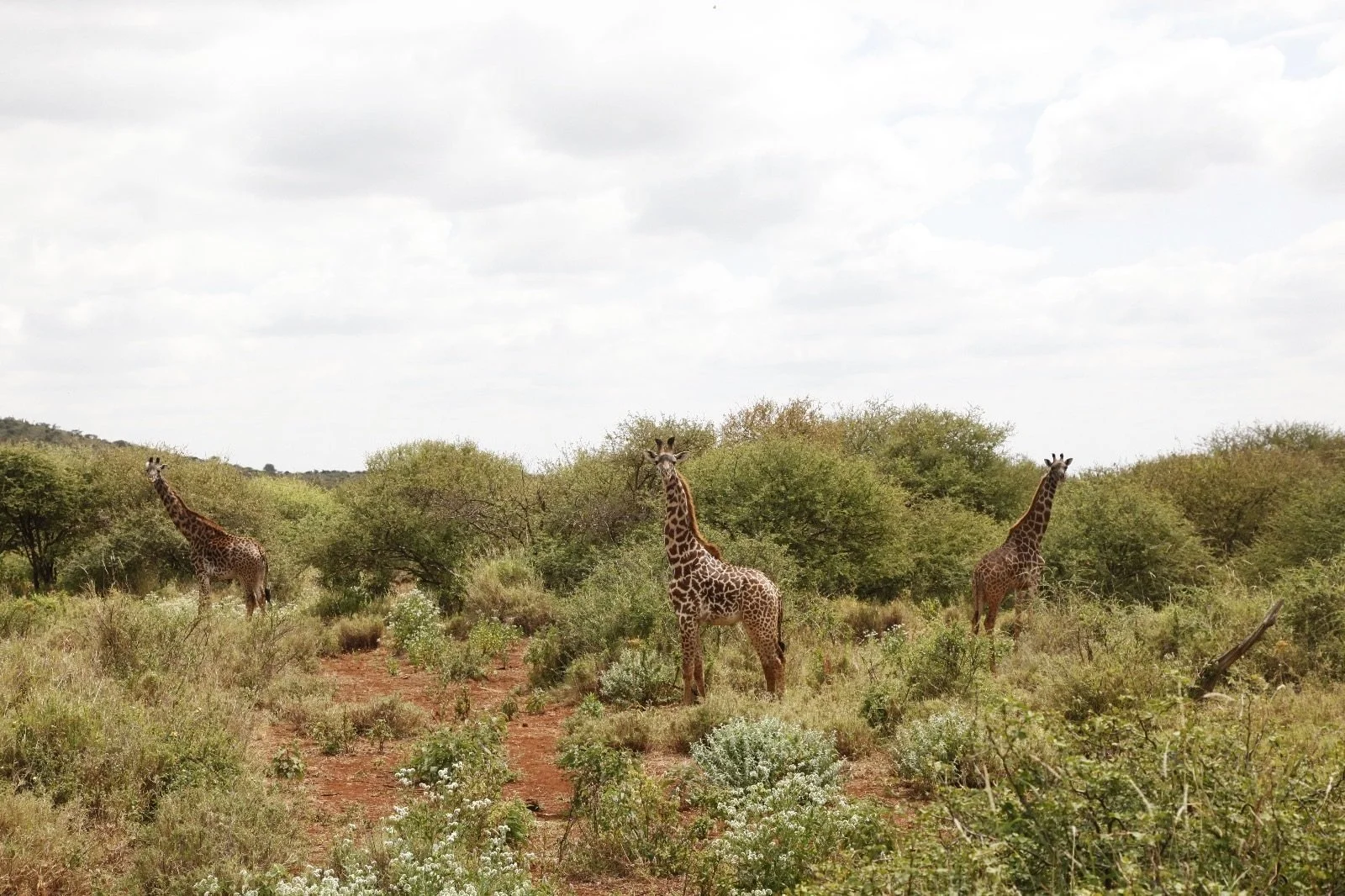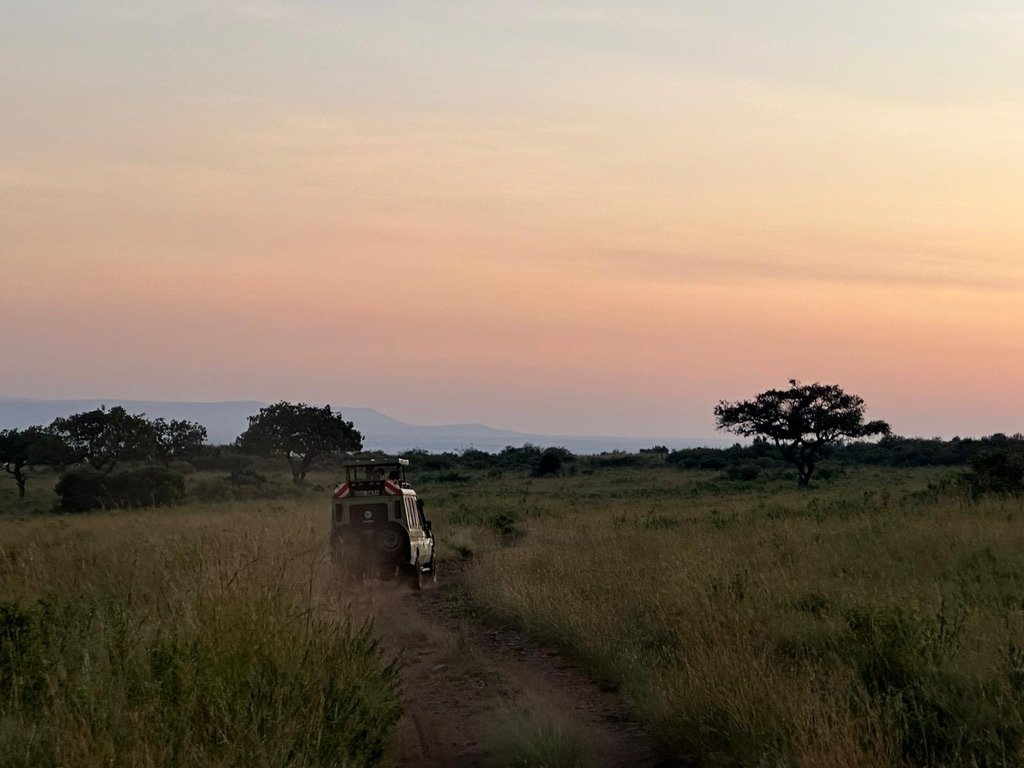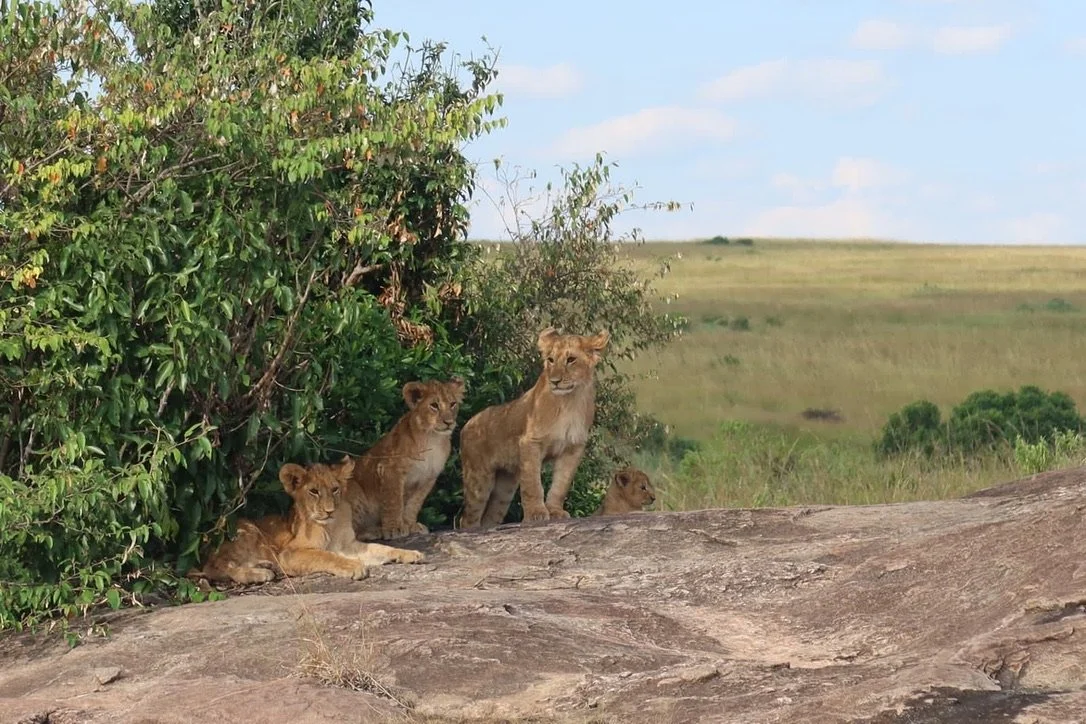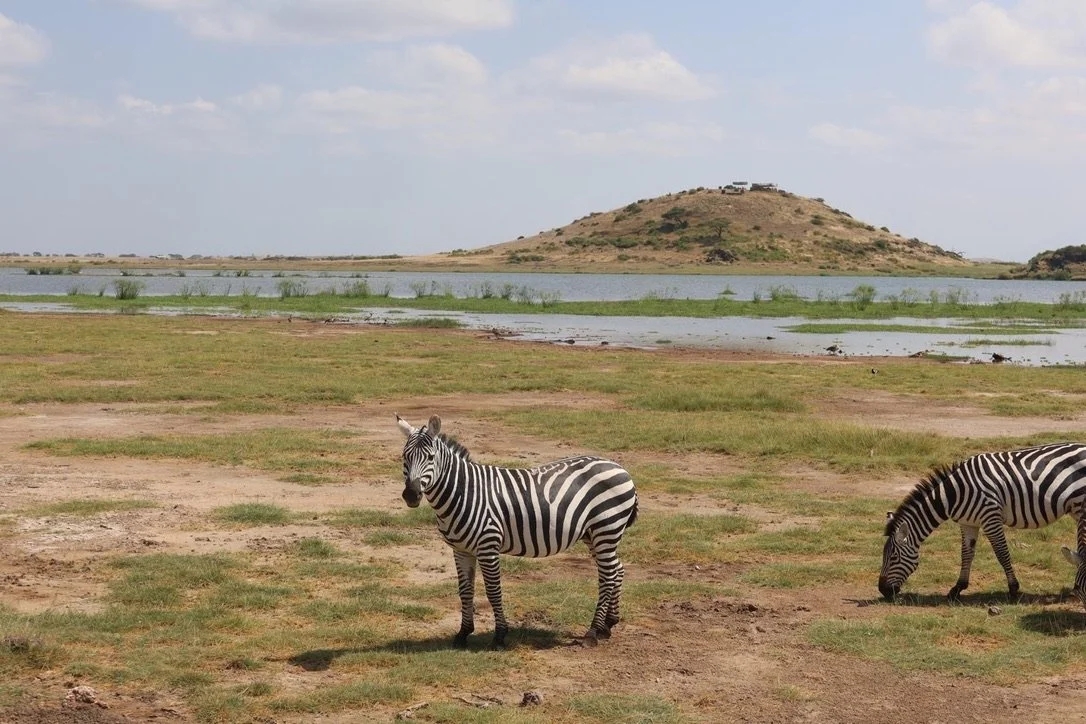
Date: June 25th, 2025
5 Ways to Sustainable Tourism on a Safari
Overview
In June 2024, I had the privilege to study abroad in Kenya to study giraffe ecology and conservation for a month. Here, I learned a lot about giraffes, how the locals live, how they feel about conservation, and how to be a sustainable tourist when on a safari. I had such a different view about national parks and conservation when I left Africa than when I started, and really took home a lot of points that I wanted to share on being a good tourist. I saw so many issues with the national parks and how they operate, and how tourists can help. National parks are literally built for tourists as the only means to attempt and conserve land while profiting off it, so tourists are the backbone of this industry. Here are 5 ways you can improve these parks and set a good example for other travelers around the world!
#1: Be Quiet!
This is a problem that I did not even consider being disruptive to animals when I went on my first Safari. I found myself talking and exclaiming out loud how AWESOME IT IS TO SEE THESE ANIMALS, and did not internally reflect on how we were disturbing them. I also found this was one of the most prominent things that other tourists were at fault for. It is SO exciting to see animals that you always dreamed of seeing up close. Maybe you see a baby animal or lions or hyenas eating something, and you are just so enthusiastic about it and want to yell at all of your fellow passengers to look at what you are seeing…but taking in what you are seeing quietly and then discussing with friends and family once the van has started to move away from the animal is the best thing you can do. Animals have great hearing, and us being there is already disturbing their daily life. That, compounded with the sheer number of tourists that observe an animal, can get quite disruptive, and you might even miss hearing noises from that animal over all the noise the people are making. Be respectful to others, be respectful to the animal, and BE QUIET.
#2: Stay ON the Roads!
When you get into the car of a tour company, you assume they know and will stick to the rules of the park because it is their job and they are there almost every day, right???? Wrong. One of the biggest shocks that I had when living in Kenya was how many drivers continuously broke the rules for the sake of a larger tip from their passengers. But it is not their fault…if they don’t get caught and will make more money, they will always choose to break the rules. The parks do not have enough funding for the manpower that it would take to continuously move around the park, making sure these tour companies stick to the rules. Maasai Mara has almost 300,000 visitors every year, so that is a lot of people to regulate over such a large area! Subsequently, most tourists aren’t educated enough to know that this is a huge problem, and they trust that their guides are doing the right thing. When someone sees that a car goes off-road to get up close to a lion, are they going to sit there and say to their guide, “Don’t follow them, I don’t want to see the lion”, knowing they paid $400 for the day to enter the park? No! And that is when we have to be good stewards of the environment and know that sticking to the roads is the most beneficial thing we can do for these animals.
All of these parks have rules you can look up on their website to know what is allowed and what is not allowed in the park. If you are looking at a company you want to use for day trips into the park, I encourage you to question them on whether they go off the roads. Once you meet your driver, it never hurts to emphasize that you do not want to go off the roads, and always keep communicating with your driver throughout your trip! They are there to make your experience exactly how you envisioned it!
#3: No Crowding!
This idea involves both of the previous two rules to be a sustainable tourist. Two rules that park goers overlook are the number of vehicles allowed to be around an animal at one time and how close those vehicles are allowed to get. This rule is one of the most detrimental ones for wildlife, and I saw this happen with a cheetah in Maasai Mara. When people see groups of vehicles all in one area, they are all going to flock because they know a good animal sighting is there. When we were in Maasai Mara, a cheetah was sitting about 10 feet off the side of the road, trying to hunt. If you know anything about cheetahs, you know they only have two times they will hunt, dawn and dusk, because other times are too hot for them to pursue their target. If you have tourists consistently disturbing this time of day when the cheetah can hunt, it will starve and die. During this situation, there were about 30 cars stacked on the road in this area, going off road and trying to view the cheetah and move around one another. At one point the trucks ended up cutting off the cheetah and trapping it in the middle of the road, and it was visibly stressed. Cars were revving their engines, trying to move, and some got within about 6 inches of the cheetah. This is very much not allowed and a very poor example of the tourism industry. In fact, that situation is exactly why I wanted to write a blog post about how to be a better tourist.
#4: No Littering!
Thankfully, I did not see many examples of this; however, there was more trash in the parks than I expected, and all of it was due to people not picking up their food trash. Every lunch spot we saw had trash lying around, and I even saw people actively littering in front of us when we stopped in public areas. Animals can get into this, and it just ruins the park experience for other tourists. Do everyone else a favor, clean up after yourself, and clean up after others. Just because the trash isn’t yours doesn’t mean it isn’t your responsibility, as we are all responsible for keeping the parks clean…not just the park rangers!
#5: Don’t Feed the Animals!
While I unfortunately would think this goes without saying, at many lunch spots we frequented, every tourist I saw tried to feed birds or other animals their food. Most people think that they are helping the animals by making their lives easier when they don’t have to search for food, but feeding them automatically makes these animals reliant on tourists and takes away their freedoms of being undomesticated. This learned reliance hurts these animals because if there happens to be a time when tourists don’t frequent these spots or the parks get shut down, the animals have no way of foraging on their own, and they could potentially die. Give them the freedom to live without human intervention, and don’t share your food!
Final Thoughts:
National Parks only work as well as we let them. If we are practicing bad tourism habits, the National Parks will be bad. If we are being sustainable and responsible for how our behavior affects the wildlife and their environment, then it will run well. While these parks are expensive to go to and it can seem easy to take advantage of everything there, these are some of the only places in the world where the endangered wildlife are in a fairly unbothered area. Simple actions seem small, but it compounds when everyone does it. Be a responsible and respectful tourist to other tourists, the wildlife, and native vegetation. Enjoy everything the parks have to offer, and look up the rules before attending!




